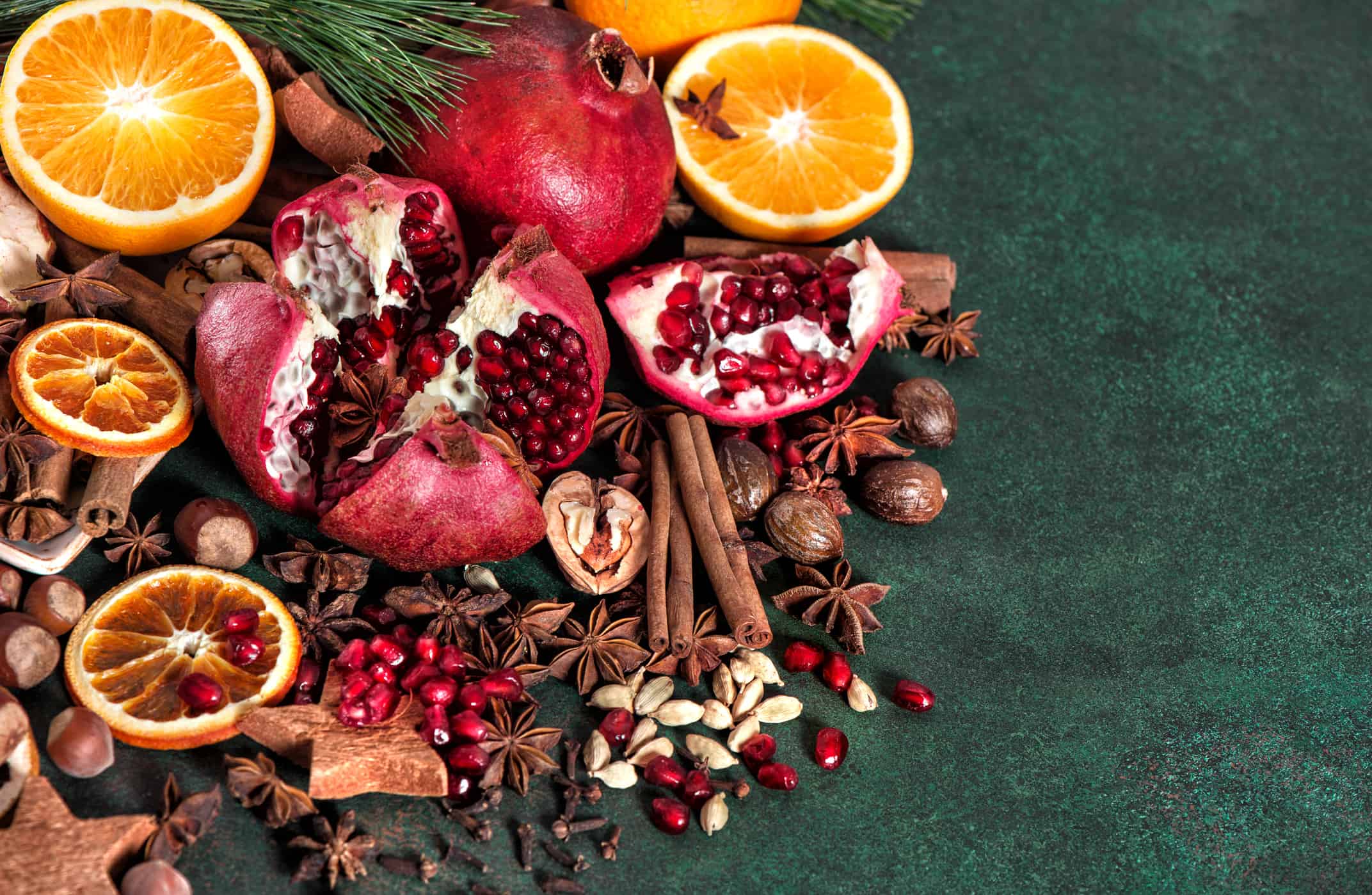Have you ever bought a tomato in winter, only to find that it was flavorless and not very fresh? This could have been because tomatoes are generally a summertime crop. Tomato harvesting can begin as early as May and by December most varieties are out of season. Many of the fruits we know and love are in season during the warmer months. But fear not! Winter is the peak harvesting time for plenty of tasty fruits. Let’s take a look at 12 fruits that are in season during winter.
1. Pears

Seckel pears are great for spicing and pickling.
©MERCURY studio/Shutterstock.com
Pears are a great source of fiber, vitamin C, flavonoids, and minerals during the cold months. Be sure to eat the skin of your pears to obtain all of the nutritional benefits. Many varieties ripen in Fall, but late-season pears ripen even when temperatures drop below freezing, and can keep well into January. The seckel pear (also called the “sugar pear”) is a small and extremely sweet variety that can even keep into February.
Pick pears that are somewhat firm and a little bit green if you’d like them to last longer into the season. They should be ripened at room temperature. Once they are golden or brown and have a bit of softness at the stem, they can be eaten or stored in the refrigerator.
2. Cherimoyas
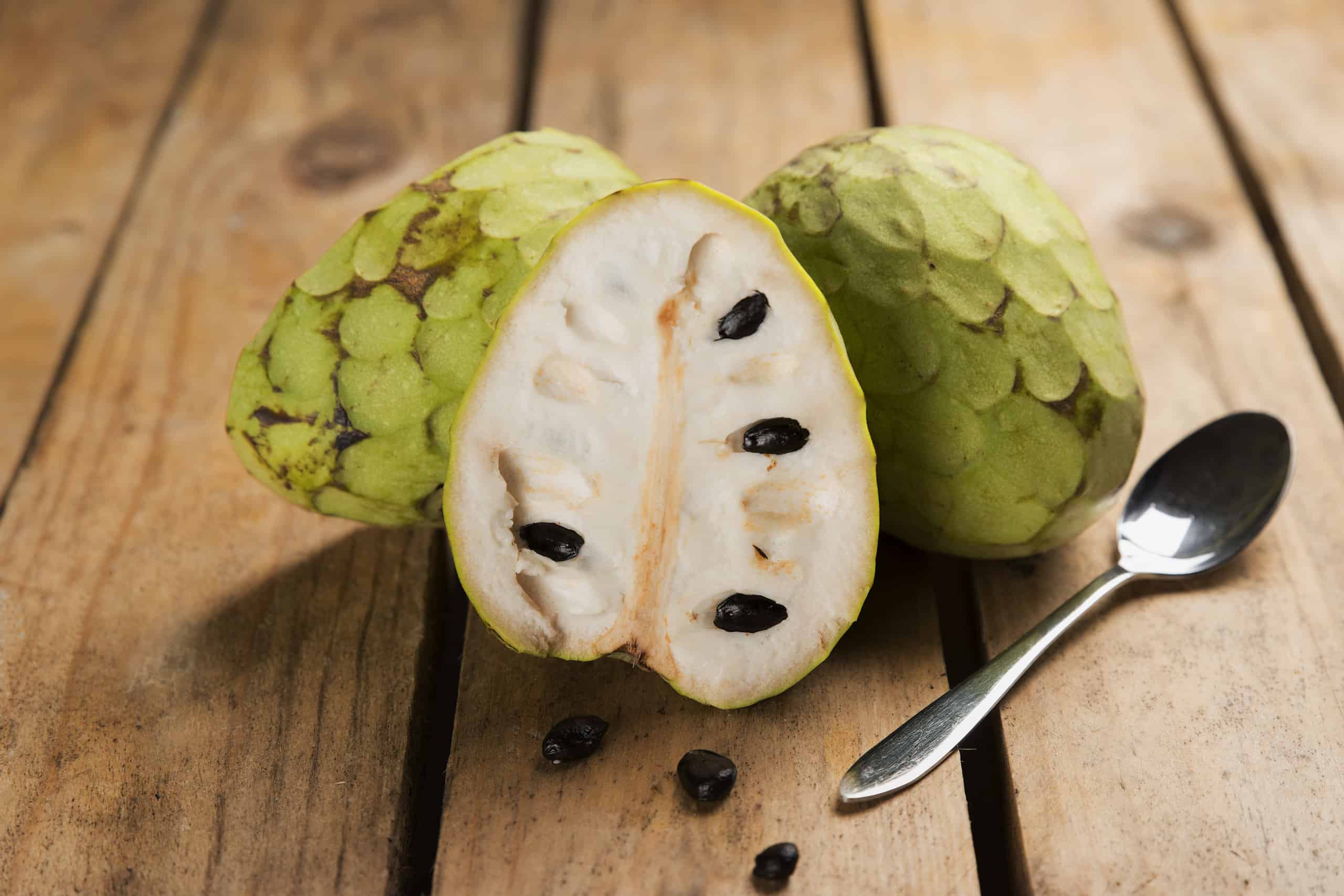
The cherimoya was Mark Twain’s favorite fruit.
©Fabio Di Natale/Shutterstock.com
Next time you see a fruit that looks like a scaly dragon egg at your winter market, reach for it! The cherimoya is a refreshing fruit with a flavor that is reminiscent of pineapple. It is often called a “custard apple,” thanks to its creamy, silky texture. Cherimoyas are loaded with vitamin B6, vitamin C, and potassium. They are in season from October through May.
3. Lemons
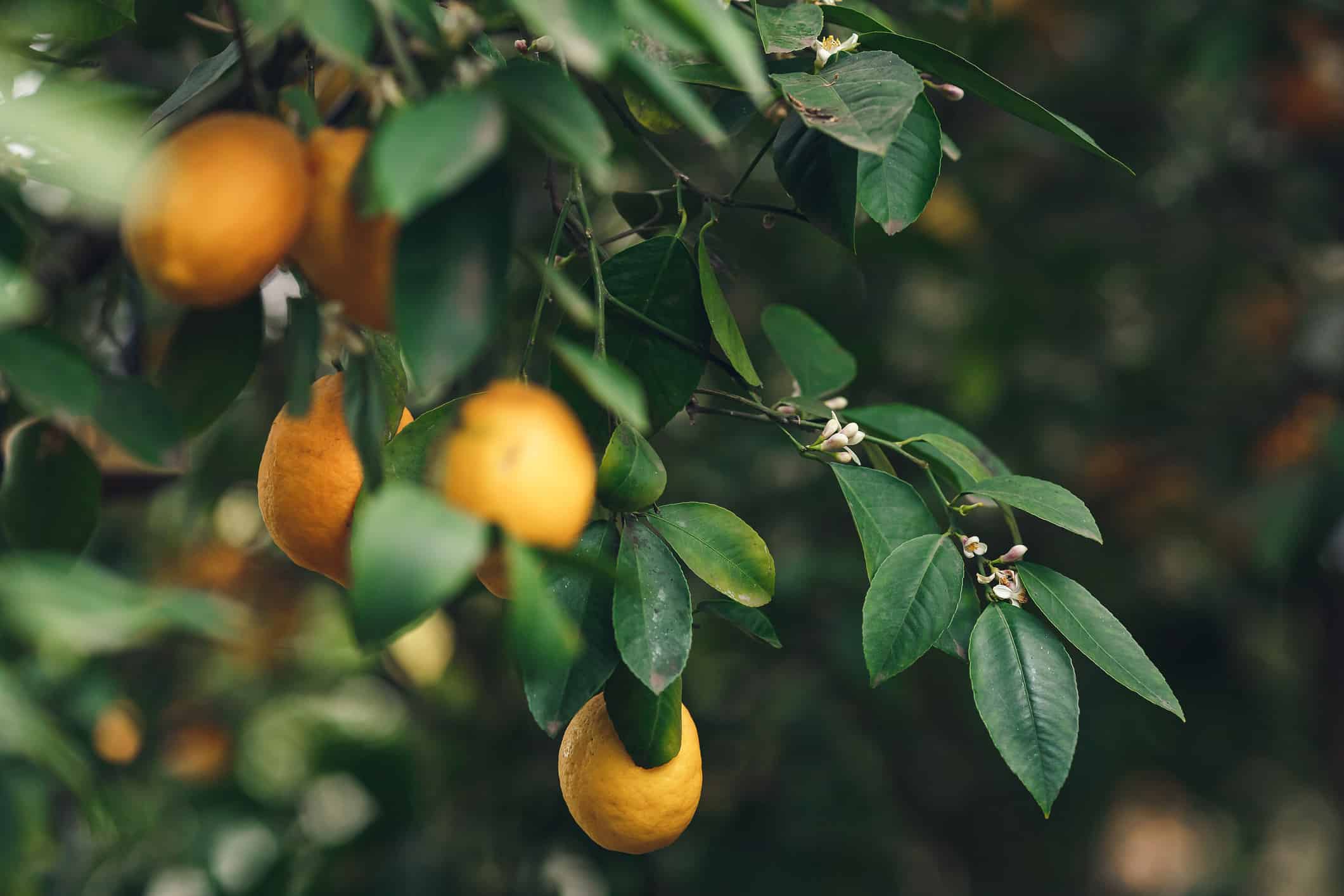
Meyer lemons are less acidic than other lemon varieties, and they can be eaten in their entirety, rind included.
©iStock.com/MarinaVarnava
There’s no need to worry about getting scurvy (a disease caused by vitamin-C deficiency) this winter; lemons are at their peak during the cold months. Farmers pick these citrus-acid-packed fruits year-round, but certain varieties like the Meyer lemon ripen between December and May. Be sure to keep an eye out for winter lemons at your market.
4. Persimmons

When ripe, the pulp of a persimmon has the consistency of jelly.
©AlexeiLogvinovich/Shutterstock.com
The uniquely delicious persimmon is in season from September through January, depending on the variety. This orange fruit has a honey-like flavor that is richly sweet and sometimes tangy. Persimmons should be eaten when fully ripe. A ripe persimmon has a deep orange and sometimes reddish hue, and it is not too firm. Persimmons are often eaten sliced, in yogurt, in salads, or as a tasty pastry ingredient.
5. Apples
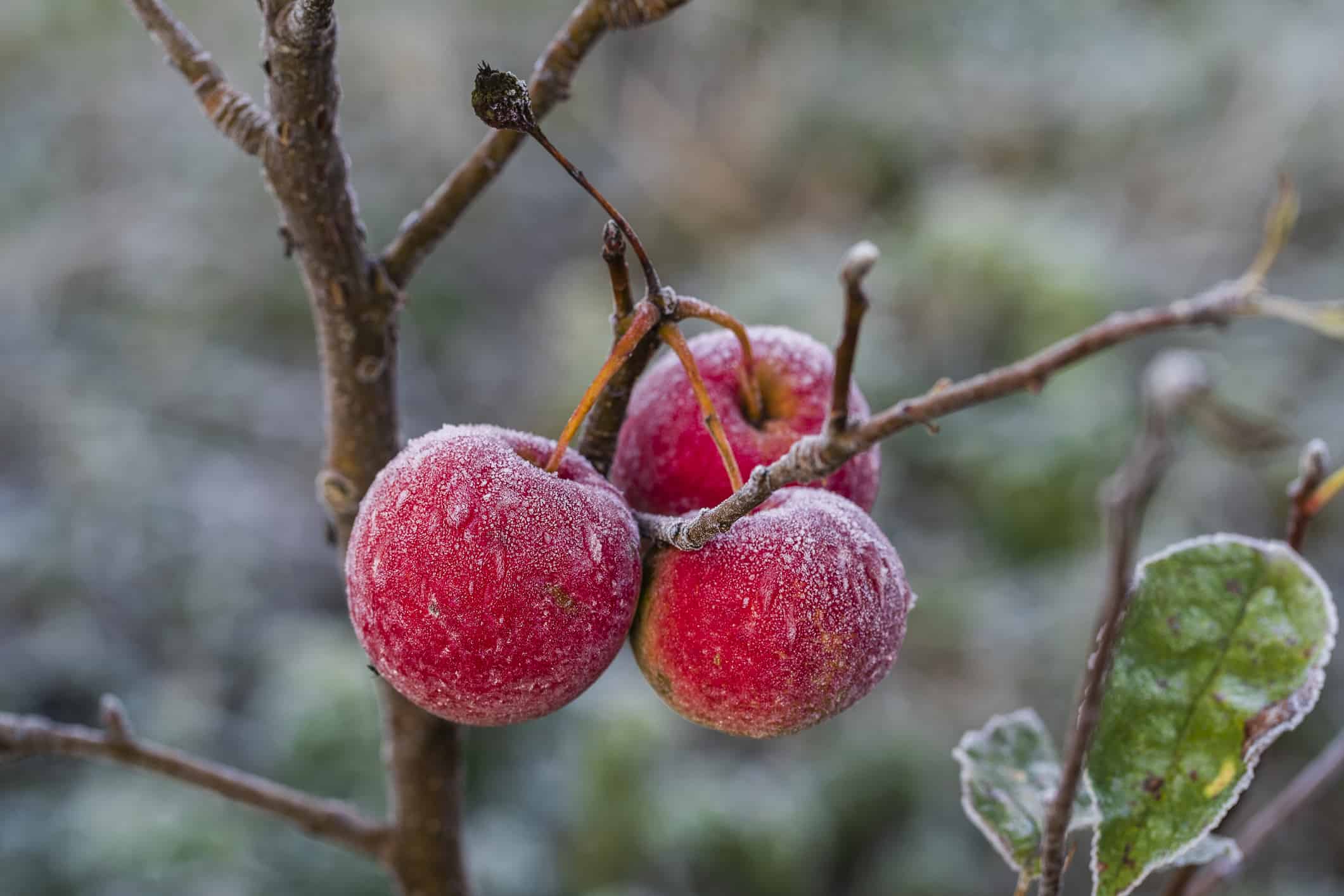
Apples are tolerant to light frosts.
©intek1/iStock via Getty Images
What’s more comforting on a frosty winter day than the scent of a spiced-apple pie baking in the oven? Apples are a popular fruit to eat in the wintertime. They tend to be at their peak in autumn, but they can stay fresh for weeks if stored properly. Keep them in a cool place, away from direct sunshine and heat. Apples stored in the refrigerator can last for up to 6 weeks. So, get out your cinnamon and nutmeg and get ready to enjoy this classic cold-weather fruit.
6. Pomegranates
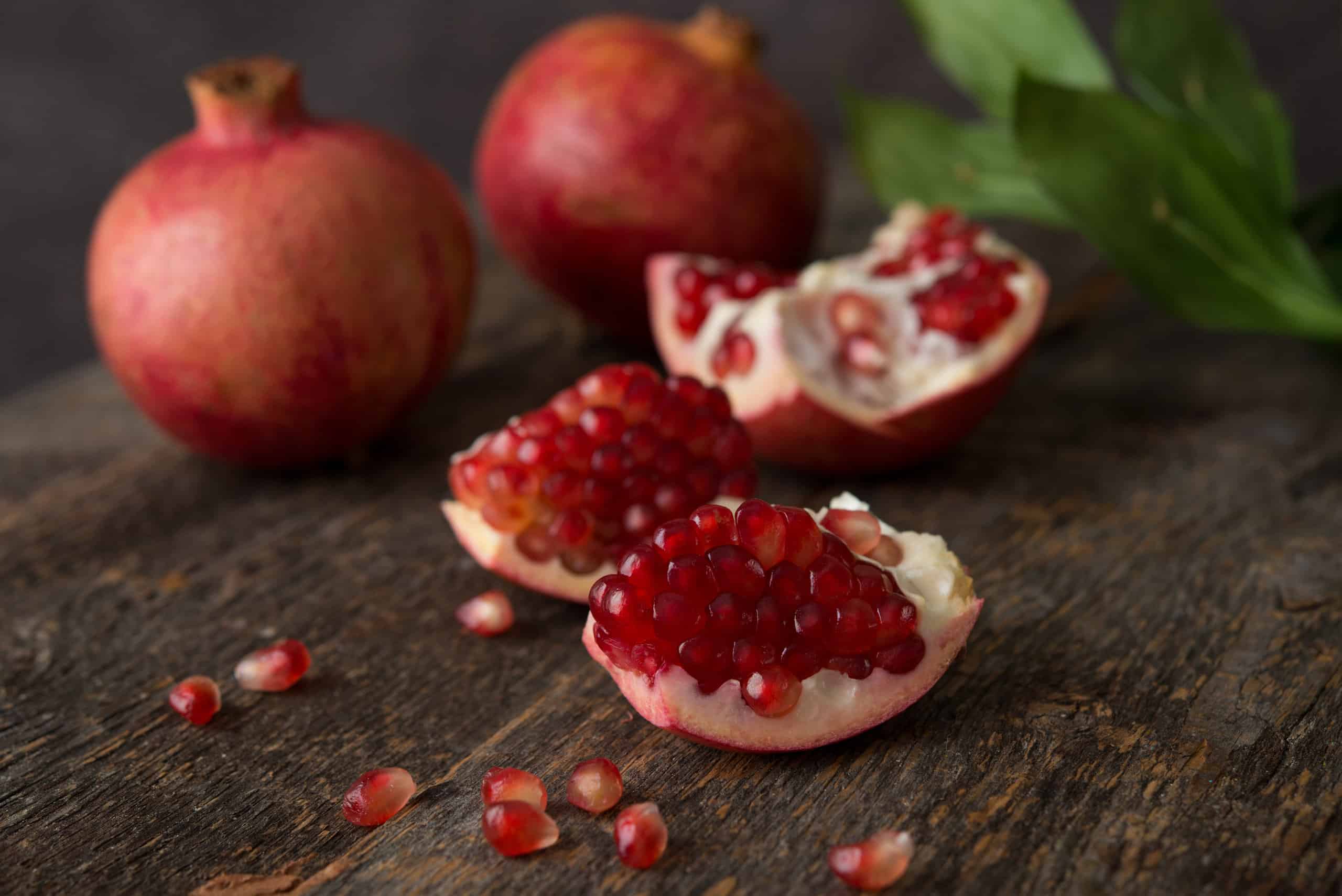
People often refer to pomegranates as the “Jewels of Winter.”
©Gorenkova Evgenija/Shutterstock.com
When it comes to hardy crops, pomegranates should not be overlooked. This red, seedy fruit is tolerant of freezing conditions, and can survive in temperatures as low as 12 degrees Fahrenheit, or sometimes even lower. The hardiest varieties ripen between the months of October and January. Use pomegranate seeds in your winter salads for extra sweetness and crunch.
7. Oranges
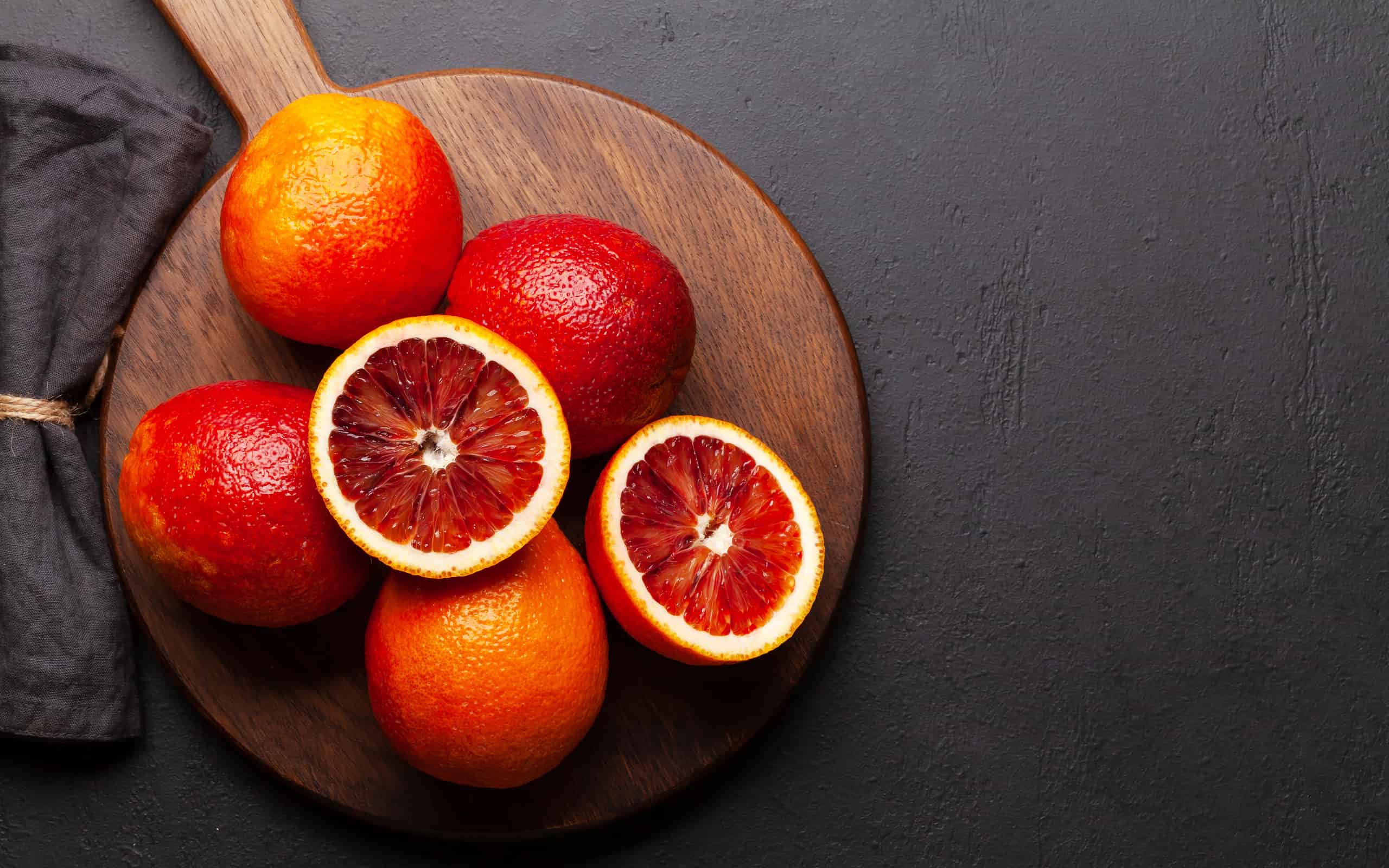
Blood oranges are sweetest when they are harvested in February.
©karandaev/iStock via Getty Images
When you get an orange in your Christmas stocking, it’s said to be a “gift of gold” from Saint Nicholas. Santa knows that winter is a time to prize oranges, most varieties of which are in season between November and April. For the freshest oranges in December and January, go for sweet naval oranges or bitter-tart blood oranges.
8. Mandarins
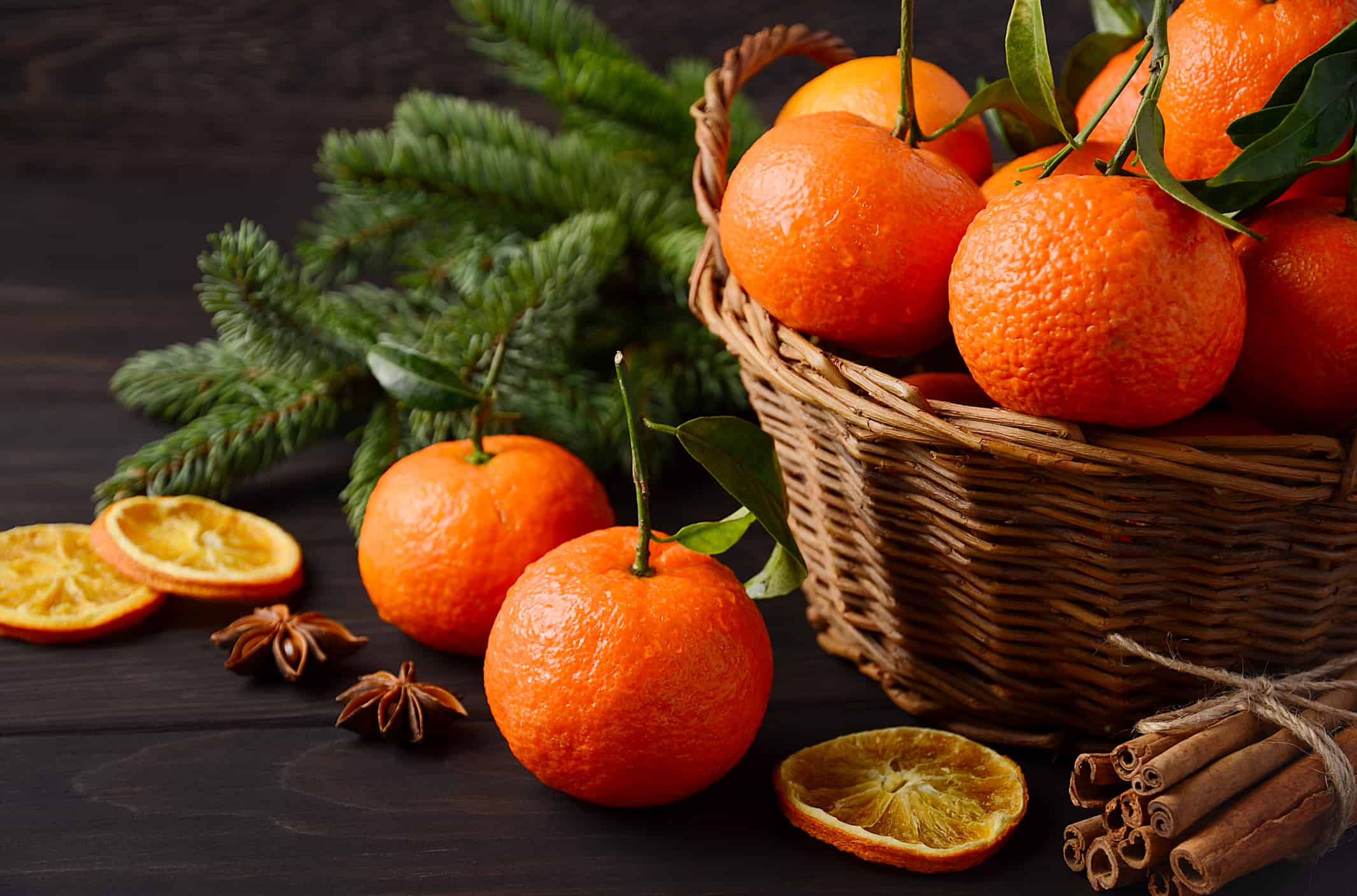
Mandarins must ripen on the tree. They cannot continue to ripen after they are picked.
©JulijaDmitrijeva/iStock via Getty Images
November through May is the best time to enjoy one of nature’s tastiest treats—mandarins! This small, sweet, and tangy orange species is a perfect winter fruit. It gets sweeter as the temperature drops. Tangerines, which are a type of mandarin, and clementines, which are closely related, are at their ripest during the cold season, too.
9. Kumquats

Kumquats have been cultivated in China and other East Asian countries for centuries.
©hachiware/iStock via Getty Images
If you’re looking for a snacking fruit, the kumquat is your friend. In season from November to March, it can be eaten whole, including the skin. Kumquats are very tart and can also be used in jams. Avoid buying more kumquats than you need, as they do not keep as long as other winter fruits do.
10. White Sapote
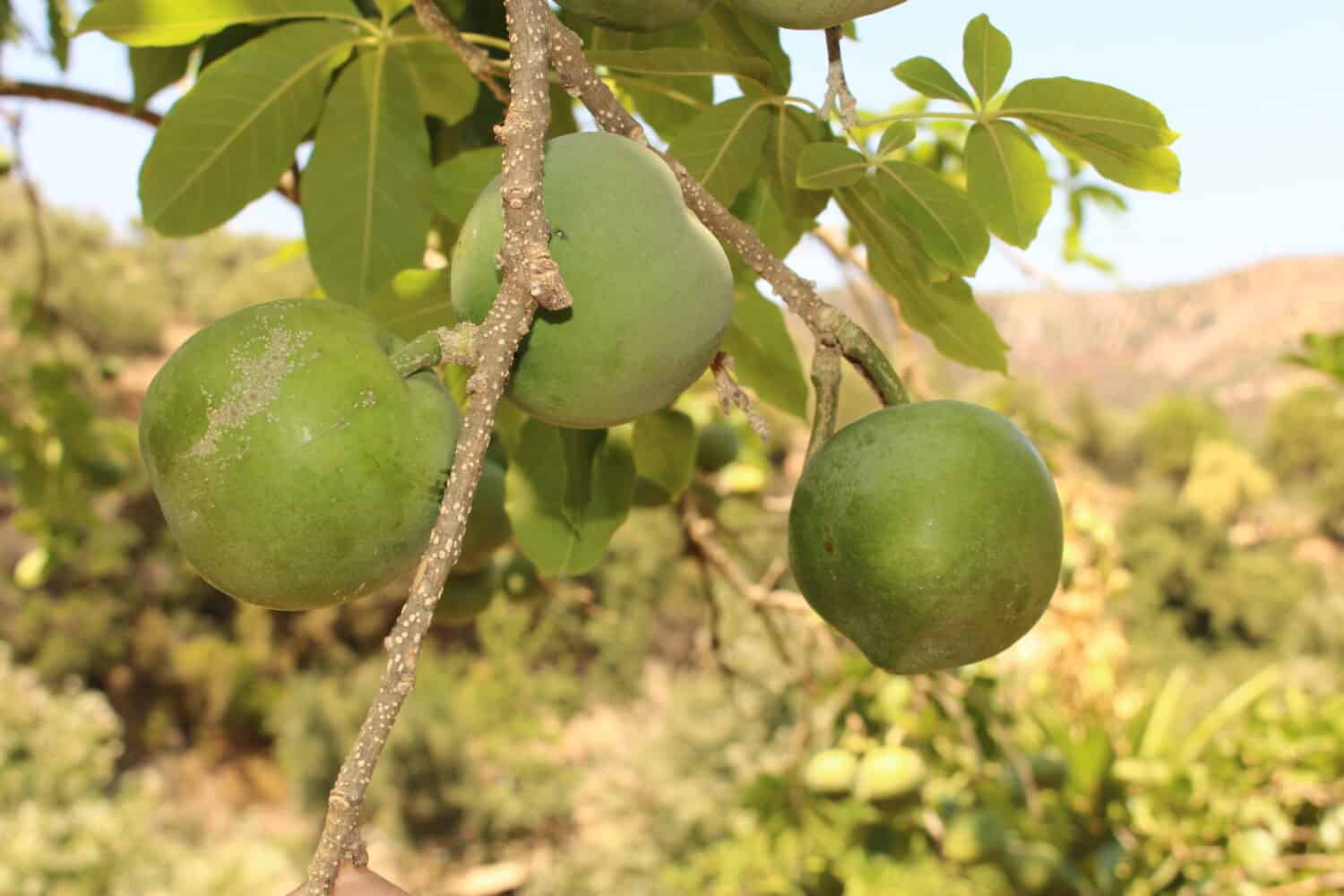
White sapote can serve as a great source of fiber, iron and other important nutrients during the winter months.
©RukiMedia/Shutterstock.com
Did you know that there’s a winter fruit that tastes like vanilla custard? The white sapote is in season from October to February. Sapote comes from a Nahuatl word that means “soft, edible fruit.” White sapote is very delicate—bruises easily damage the integrity and flavor of the pulp—so it is a rare find in markets.
11. Grapefruits
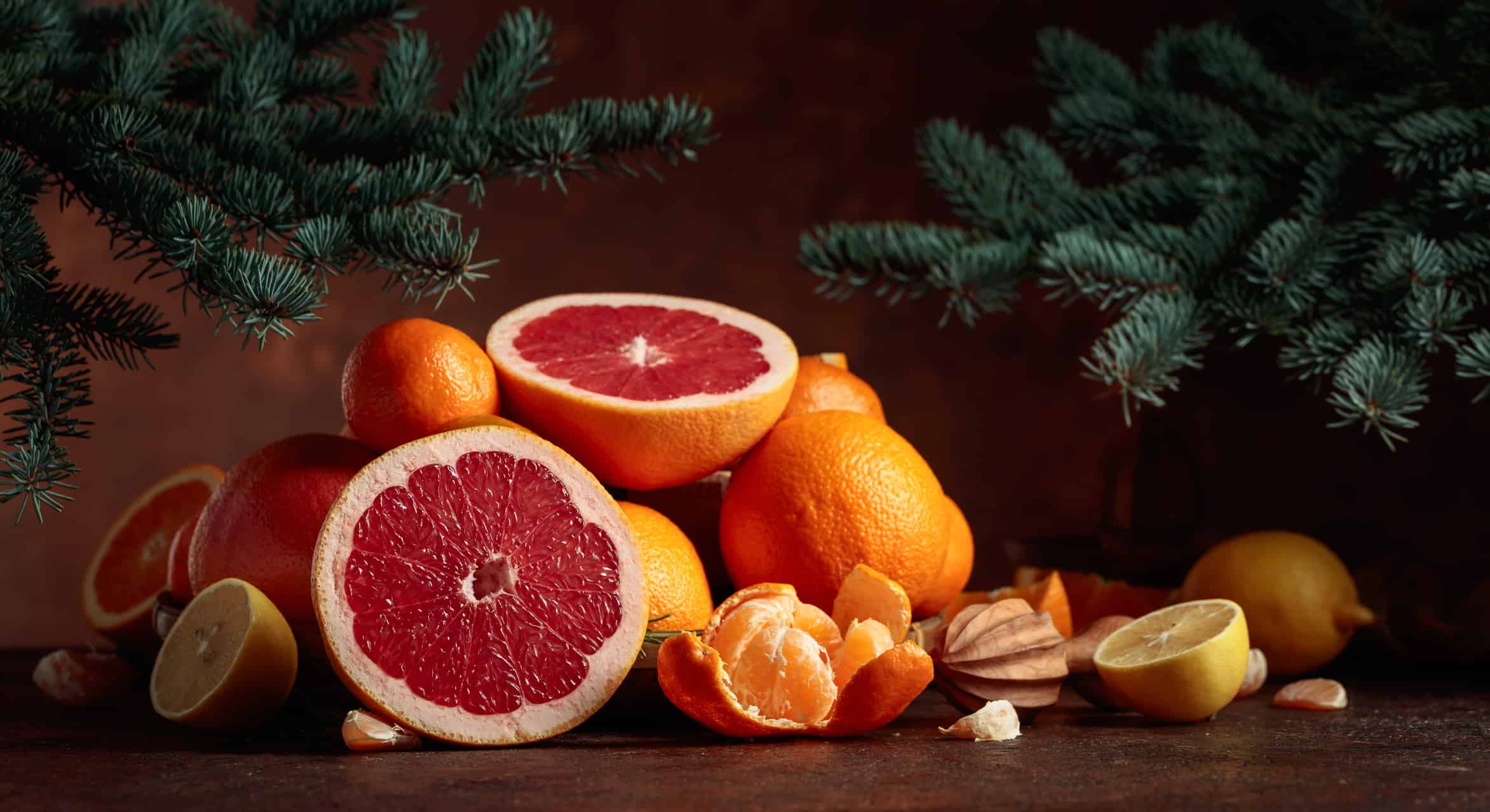
Grapefruit is one of the wonderful citrus fruits that can be best enjoyed in the wintertime.
©igorr1/iStock via Getty Images
Like several of our other favorite citrus fruits, grapefruits are in season during winter. This large citrus fruit ripens between December and March. Though its bitterly tart flavor may take a bit of getting used to, grapefruit is often eaten as a breakfrast fruit or as a snack. Many people prefer to eat it with honey or another kind of sweetener.
12. Pomelos
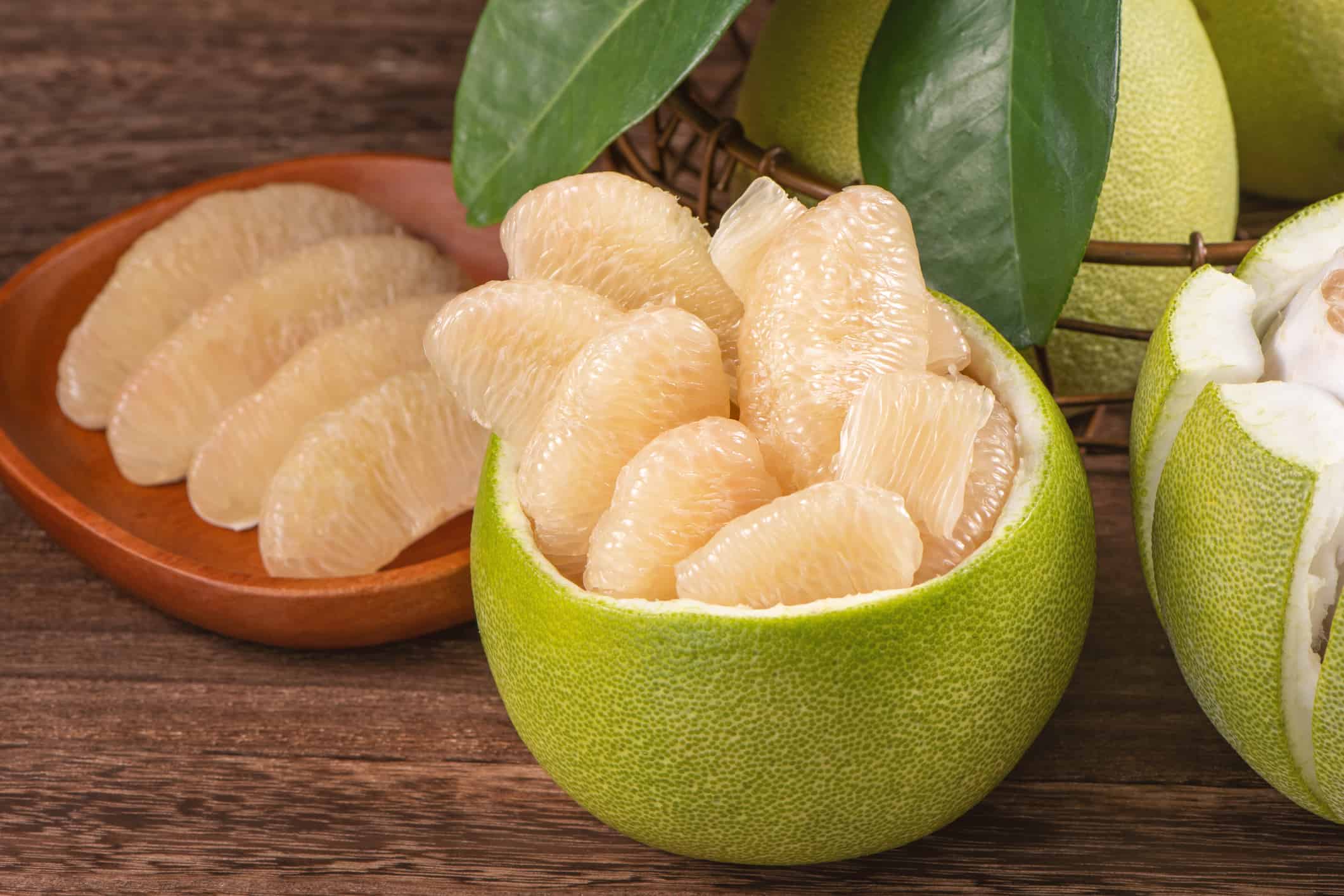
You can meet your daily vitamin C requirement by eating roughly one quarter of a ripe pomelo.
©insjoy/iStock via Getty Images
Topping off our list of a dozen fruits that are in season during winter is the legendary pomelo (also spelled pummelo). Picked from November to March, this is another citrus fruit that shouldn’t be missed during the winter months. Pomelo is an ancient fruit that is native to Southeast Asia. It is similar in flavor to grapefruit, but it is a little less bitter.
| Number | Fruit |
|---|---|
| 1. | Pear |
| 2. | Cherimoya |
| 3. | Lemon |
| 4. | Persimmon |
| 5. | Apple |
| 6. | Pomegranate |
| 7. | Orange |
| 8. | Mandarin |
| 9. | Kumquat |
| 10. | White sapote |
| 11. | Grapefruit |
| 12. | Pomelo |
Thank you for reading! Have some feedback for us? Contact the AZ Animals editorial team.

